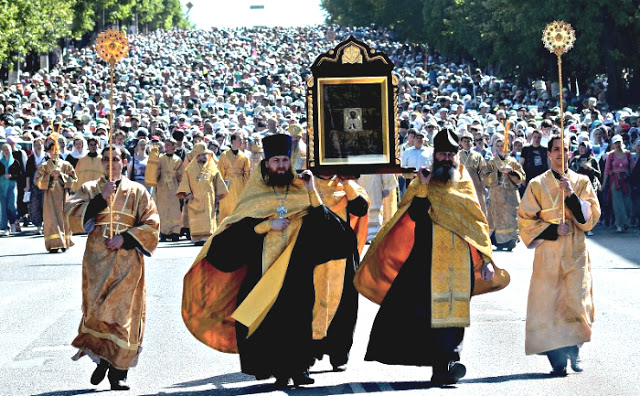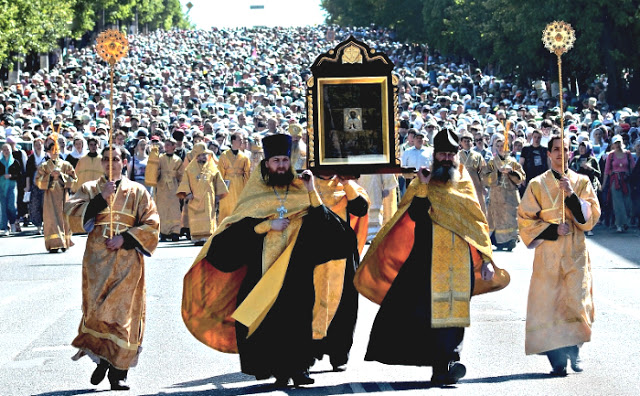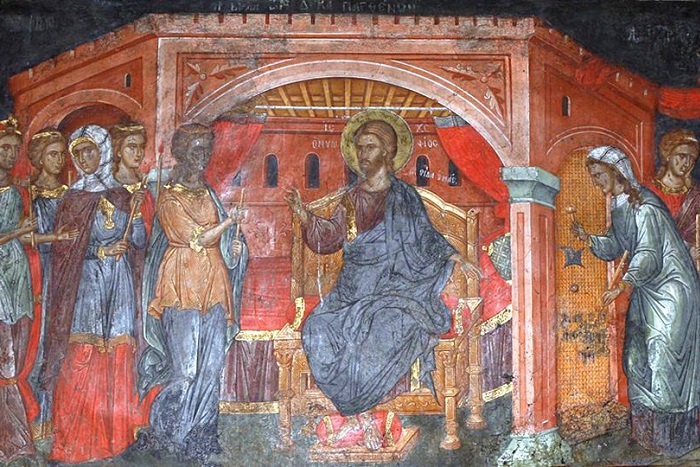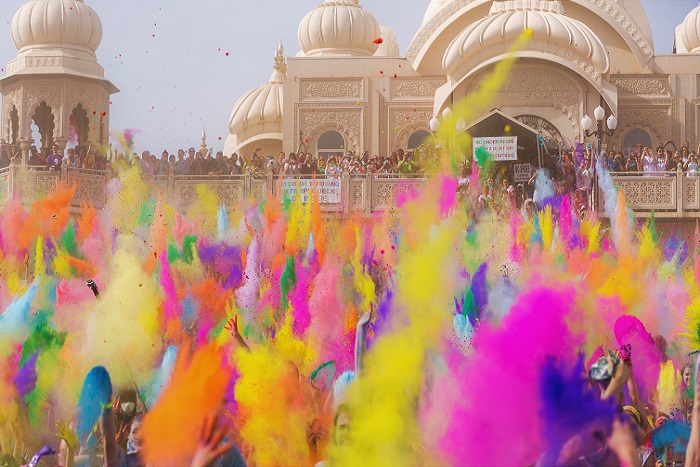
Cross processions in Russia have a vibrant history and are hugely popular. So much so that 60,000 Russians are willing to walk 100 miles to honor religious occurrences.
On holidays and special occasions, Russian believers will all suddenly empty out of the church and proceed outside, whether it’s swelteringly hot or snowing, and follow the cross and the priests… sometimes for a walk around the church, other times for hundred-mile hikes.
Cross processions are a traditional and very popular part of Russian Christianity. The tradition dates back to the Byzantine empire in 400 AD when saints organized night processions around Constantinople to help protect the city from the heretics of the day.

The clergy leads the procession with a cross, a Bible, and religious banners. Behind them, the crowd follows, singing religious hymns and sometimes carrying candles. The procession makes frequent stops to pray (and sometimes get sprayed with holy water).
Russians love the tradition. Sometimes cross processions are held to celebrate church holidays, such as Easter when the procession occurs at midnight. Everyone in the church files out and walks around the church three times, singing
resurrection hymns. The empty church symbolizes the empty tomb of Christ.
resurrection hymns. The empty church symbolizes the empty tomb of Christ.
Some monasteries have daily processions in the evenings. Monks walk around the perimeter of their monastery with candles. After they return to the gates of the monastery and re-enter it, the monastery is locked for the night. This
procession is believed to protect the monastery from all evil and turmoil for the night.
procession is believed to protect the monastery from all evil and turmoil for the night.

There is another, especially popular, type of cross processions that reenacts spiritual journeys of saints or miracle-working icons. One of the most famous ones is a 92-mile walk to the place where, in 1382, the Velikoretsky miracle-working icon of St. Nicholas was found. Though the icon itself disappeared during the 1930s and the Soviet Regime outlawed cross processions, pilgrims continued coming. Despite the danger of being harassed, arrested and some even executed, unofficially, the tradition continued throughout the entire Soviet period. In 1990, it was officially reinstated. Today, the procession mobilizes up to 60,000 people and lasts a week. Nights are spent in the fields.
According to a famous Russian priest, cross processions are physical expressions of “one communal national faith and zealous prayer for help and grace.” Indeed, the immeasurable zeal of people who joyfully dedicate a week to communal, religious marches to glorify God is absolutely stunning and inspiring.





Cross processions are essential in positive reinforcement of our goal to direct our lives toward Eternal Salvation. Each step is a physical step in the direction of the desire to follow Christ. Here at New Tikhvin Skete of the Holy Mother of God in Flagler County, Florida, we are planting a monastery in a 10-acre rural space with a spring-fed lake adjacent to a subdivision of homes where people can walk into the monastery grounds from the neighborhood enabling us to build up our community of Monastic Associates in a similar manner of how St. Elisabeth Convent has followed in the steps of St. Elizabeth (Romanova) and her initiative of the Saints Martha and Mary Monastery. Multi-lingual and multi-generational, we are family-oriented to help each other along the life journey on earth to process to the Heavenly Kingdom.